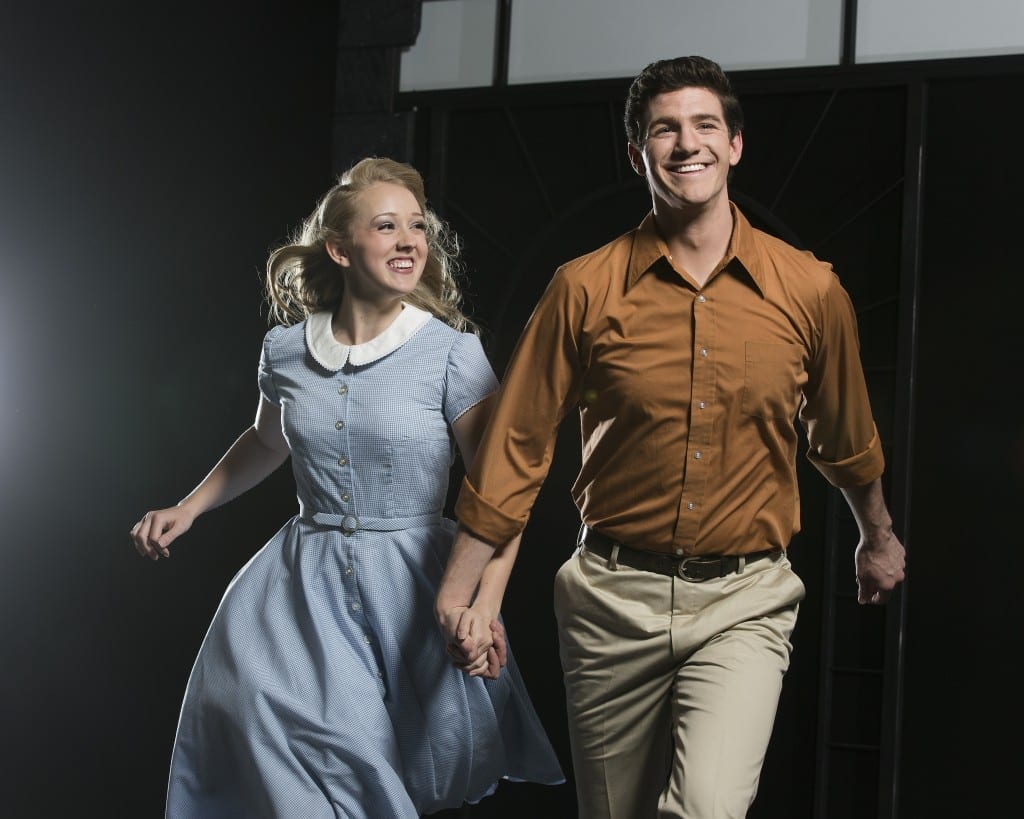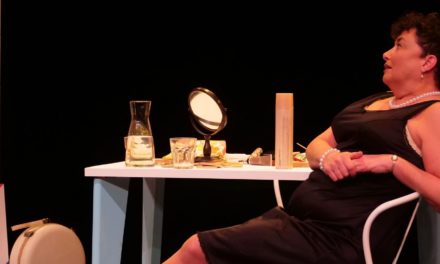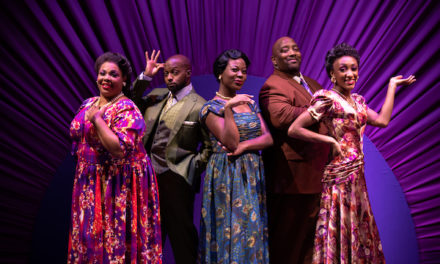PROVO — “The day we meet, the way you lean against the wind, and do not know that you are beautiful, or that anyone is watching you, this is what I see…this is love to me.” Can love truly conquer all? Even imperfections or handicaps? This theme is explored in Brigham Young University’s production of The Light in the Piazza.
“No one with a dream that’s unfulfilled should ever come to Italy,” according to leading character Margaret Johnson (played by Kimberly Olson Bunker), “no matter how dead and buried you thought [the dream] was.” Margaret is visiting Florence in 1953 with her emotionally stalled adult daughter Clara (played by Rebecca Peterson). However, when Clara falls in love with a young Italian man, Margaret is forced to reconsider not only Clara’s future, but also her own deep-seated hopes and regrets as well. The show begins with Johnson acting as the narrator and laying out the exposition and then transitioning into the opening number. This convention of Johnson as the narrator continues throughout the play; action freezes while she comments on what has just taken place or to reveal her feelings to the audience about something in the scene.
The energy started off low in the opening number and the pacing dragged throughout the first act, though it did pick up during the second act. Bunker and Peterson started off a bit trepidatious in the first few scenes. Consequentially, the relationship between their characters was unclear and communication unnatural. This may be attributed to opening night jitters, but as the show progressed both performers found their stride and delivered solid performances in such scenes as “On the Street,” where Clara runs off to meet Fabrizio and is lost and Margaret comes to her rescue and comforts her as the loving mother. Another strong scene between the two was where Clara confronts her mother with the fact that her father doesn’t love her with the line, “He doesn’t love you, I can see it in his eyes.” These strong scenes both revealed much about the characters’ relationship and emotions. Bunker had many strong moments in the show, and the permeating theme of seeking love and happiness was an interesting struggle that Bunker had to face as she tried to do what was right for her daughter. It was nice to watch Margaret strive to protect Clara and reconcile her guilt for not protecting her when she was young. However, Bunker had occasional lapses in her attempt at a Winston-Salem accent that weakened her performance. Peterson had a beautiful voice and it really soared in such numbers as “The Light in the Piazza” and “The Beauty Is.” The scene in act two where she makes a scene at a party because she thought her fiancée was flirting with another woman (though in fact “the other woman” was his sister) was her strongest moment of the show. The emotion was clear and believable, and Peterson gave a jarring performance that revealed much about her character.

Julia Richardson Carter (Signora Naccarelli), Ted Bushman (Signor Naccarelli), Kimberly Olson Bunker (Margaret Johnson), Becca Petersen (Clara Johnson), Michael Milkanin (Fabrizio Naccarelli), Tyler Hatch (Giuseppe Naccarelli), and Alicia Kaori Shumway (Franca Naccarelli)
I was less satisfied with Michael Milkanin’s performance as Fabrizio. Though he had the appropriate good looks and handled the dialect well, Milkanin brought little depth or development to his character. The first scene when Fabrizio meets Clara and is instantly entranced with her beauty revealed virtually everything about Fabrizio and left nothing to be explored for the remainder of the play. Milkanin has a nice voice, but his performance was often unconnected to Adam Guettel‘s music and lyrics; he lacked variety in dynamics or vocal choices making his performance border on operetta rather than a contemporary musical, which was out of place compared to the other actors. Both of these weaknesses lead to a one-dimensional caricature of “a boy in love,” and stunted the chemistry needed for Fabrizio and Clara’s relationship. This was further diminished by director Scott Eckern’s decision to tone down what would have been the passionate ending of Act One between Clara and Fabrizio. Instead, the end of the act fell flat with the bedroom scene consisting of little more than the removal of a jacket and a goodnight kiss.
The supporting characters were quite strong in their performances and commitment. Cameron Smith gave a fantastic portrayal as Roy Johnson. The many phone calls between him and his wife Margaret were believable and revealed much about their relationship. The subtext was clear, and the challenges in their marriage were a contributing plot point contrasting Clara and Fabrizio’s young love and passion. Ted Bushman (Signor Naccarelli), Julia Richardson Carter (Signora Naccarelli), Alicia Kaoria Shumway (Franca) and Tyler Hatch (Giuseppe) all gave solid performances as the Naccarelli family. They way the handled the dialogue, their strong voices, and their passionate commitment to their characters made their interactions a highlight of the night. Bushman’s scene with Bunker in “Let’s Walk” was a standout moment as the romantic tension between the two actors grew, leading to a moment of infidelity spurred by Margaret’s need for love and attention.
The design of the thrust stage was little more than a bare stage, with various props and tables to depict the different locations the scenes take place and the entire set was created through projections on the back walls. This design element was not successful in capturing the grandeur of the large-scale production, and I was largely unsatisfied by the lack of variety to the scenes. There were few levels and pictures created, and often the action felt dwarfed by the empty space and barren stage. It was confusing to follow where each scene was taking place, as the projections were often unclear. In contrast, the costumes (under the design of Ashley Cook) were well designed and established the time period as well as enhanced the characters personalities and social class (such as dressing Clara in white dress to represent innocence, and having Margaret in gloves and properly dressed as a woman of wealth from the southeastern United States).
Despite some shortcomings, the production is worth seeing. Craig Lucas‘s script is a truly beautiful story with a memorable message. The gorgeous yet complex orchestrations by composer and lyricist Adam Guettel are well performed by the live orchestra, under the direction of Mark R. Johnson, and soar with the lovely voices in the large ensemble numbers.








